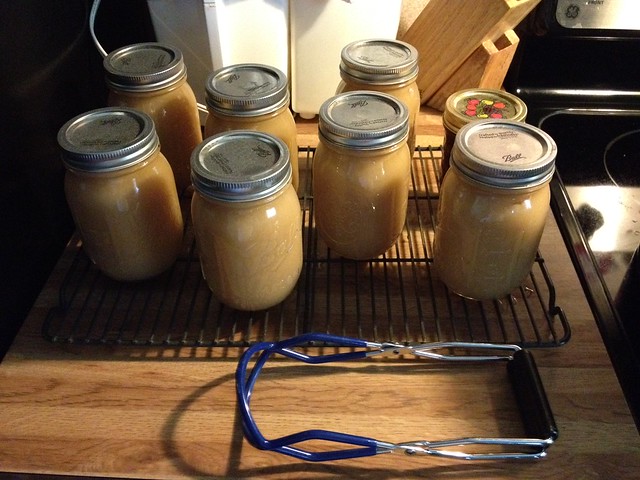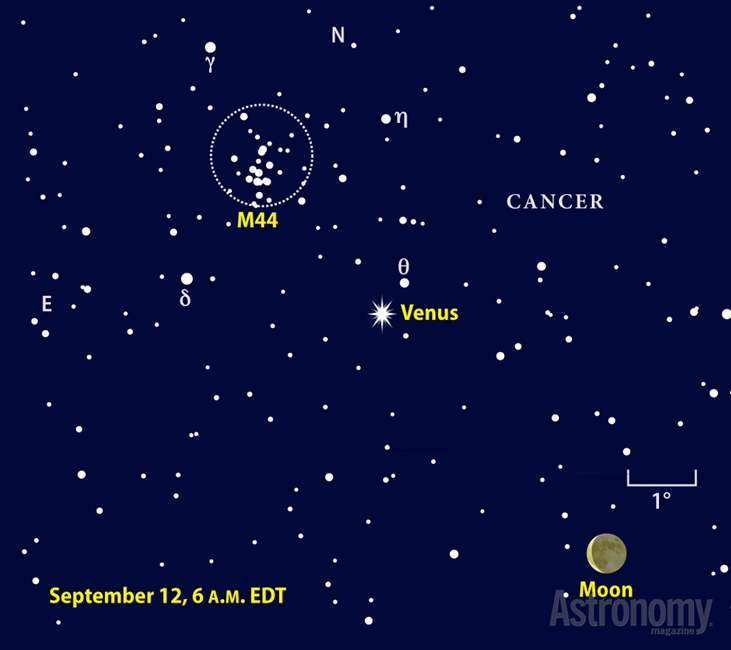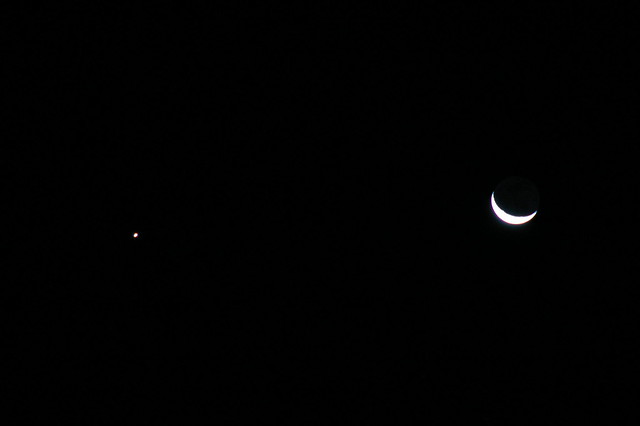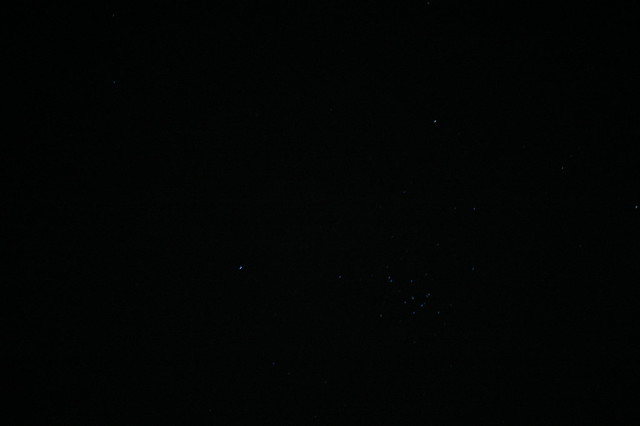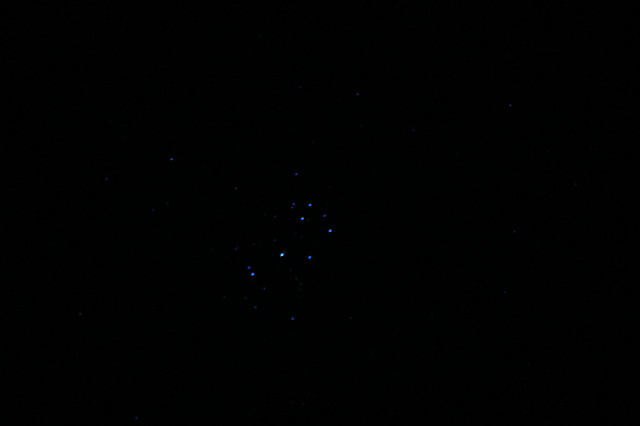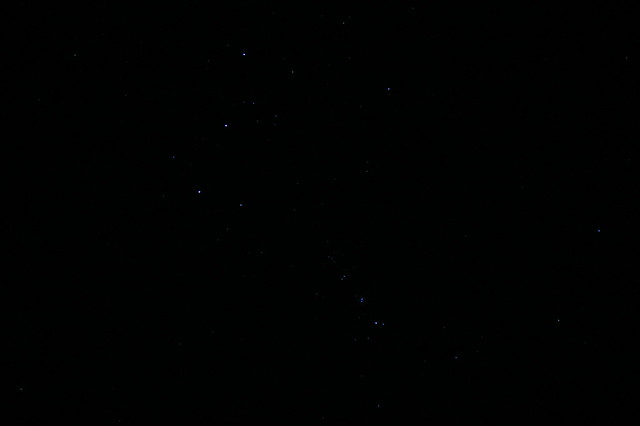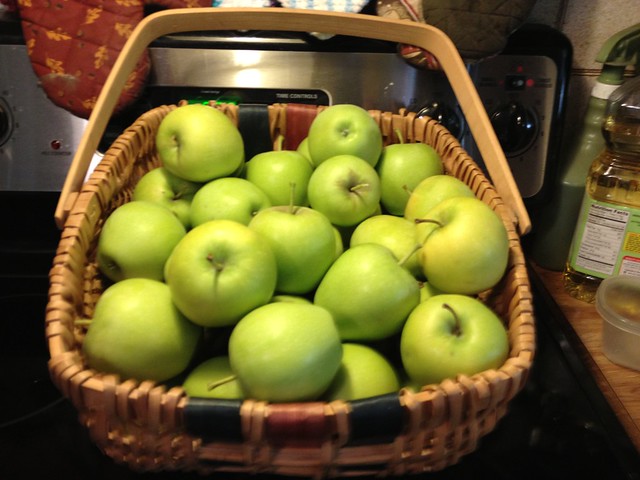
Sunday morning I began my quest to create and preserve applesauce. I’d spent Saturday creating apple butter and apple chutney. I just wanted to use as many apples as I could to provide space for even more apples that needed to be picked from our tree. I had baskets, boxes and counters covered with apples. The best way to make more room was to reduce them to mush.
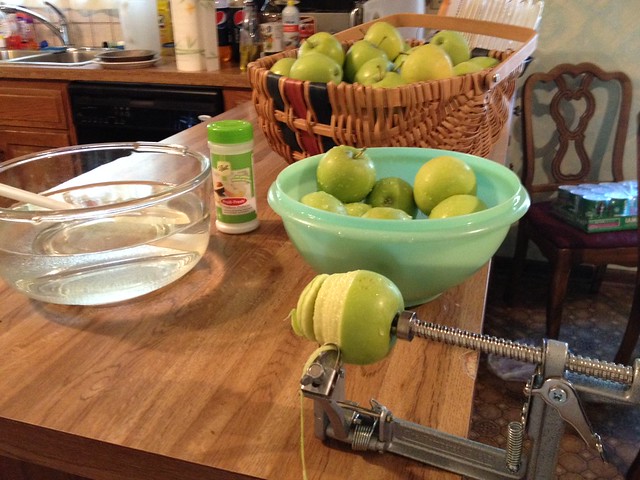 I began peeling, coring and slicing apples shortly after sunrise. I got into a good rhythm, finishing an apple every couple of minutes. After I finished a dozen apples, I transferred the chopped remains to the stockpot, which I had on a medium-low heat to begin the mush-down. I stopped at four dozen apples, and about ninety minutes after I started, I could finally sit down and give my back and feet a break.
I began peeling, coring and slicing apples shortly after sunrise. I got into a good rhythm, finishing an apple every couple of minutes. After I finished a dozen apples, I transferred the chopped remains to the stockpot, which I had on a medium-low heat to begin the mush-down. I stopped at four dozen apples, and about ninety minutes after I started, I could finally sit down and give my back and feet a break.
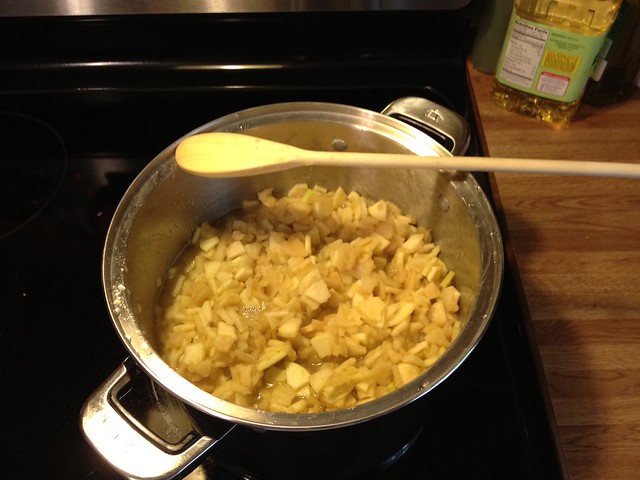 I decided to stick to the basics and followed the applesauce recipe found at the Ball Fresh Preserving web site. The only change I made to the recipe was adding a dozen apples, because some of the apples from my tree are less than medium sized. I turned the heat up to medium on my stockpot and sat down to write a couple of blog posts, while the pot thickened. Muhahahaha!
I decided to stick to the basics and followed the applesauce recipe found at the Ball Fresh Preserving web site. The only change I made to the recipe was adding a dozen apples, because some of the apples from my tree are less than medium sized. I turned the heat up to medium on my stockpot and sat down to write a couple of blog posts, while the pot thickened. Muhahahaha!
 After a couple of hours, I took a potato masher to the simmering apples. I also moved the stockpot to the back left burner to make room for the waterbath canner on the front right one. I placed the recently washed pint jars in the room temperature water in the canner and turned that burner on high enough to get it boiling. I returned to mashing my apples into a warm pulpy mess. Strange how satisfying something so simple can be.
After a couple of hours, I took a potato masher to the simmering apples. I also moved the stockpot to the back left burner to make room for the waterbath canner on the front right one. I placed the recently washed pint jars in the room temperature water in the canner and turned that burner on high enough to get it boiling. I returned to mashing my apples into a warm pulpy mess. Strange how satisfying something so simple can be.
 I didn’t want my first batch of applesauce to be of the chunky variety, so I gave up on my potato masher and switched to my blender. I’m glad I insisted on buying one with a glass jar. I prefer glass whenever possible (as you can see to the left). When my first mixer died (decades ago) I kept both mixing bowls that came with it because they were made of heavy glass (see above). I’ve also kept a Lipton Sun Tea jar I bought in the 80s because it is a true gallon sized jar and despite being dropped more than once since, it bounces and remains unbroken. Very heavy when full of iced tea, but I love that glass jar.
I didn’t want my first batch of applesauce to be of the chunky variety, so I gave up on my potato masher and switched to my blender. I’m glad I insisted on buying one with a glass jar. I prefer glass whenever possible (as you can see to the left). When my first mixer died (decades ago) I kept both mixing bowls that came with it because they were made of heavy glass (see above). I’ve also kept a Lipton Sun Tea jar I bought in the 80s because it is a true gallon sized jar and despite being dropped more than once since, it bounces and remains unbroken. Very heavy when full of iced tea, but I love that glass jar.
I pureed the boiling hot mashed apples in my blender and made a note of how many ounces on the side of the jar before pouring them into my mixing bowl. After three or four trips through the blender, I reached the bottom of my stockpot. I totaled up my ounces and had one hundred and eight ounces. Dividing that total by sixteen got me just short of seven pints. Rats. I should have peeled, cored and sliced up another dozen apples so I would have had at least eight pints. I made note for future reference so that the next time I do this, I’ll use more apples.
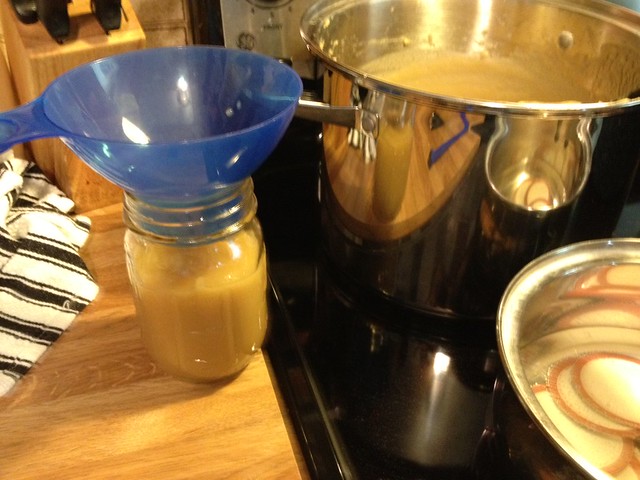 I poured the pureed applesauce back into the stockpot and turned the burner down to a low heat to keep it simmering. I reviewed the recipe for the amount of sugar I needed to add, but first I took a sample spoonful to Terry to taste. I asked if it needed sugar and he agreed it did. First, though, I took a fresh lemon and squeezed it to put a quarter cup of lemon juice into the sauce. I took another spoonful to Terry to taste test. Better, but no sweeter. I then put in the suggested three cups of sugar and had Terry taste again. Too sweet. Argh! He suggested that next time we taste after adding one or two cups and then tasting.
I poured the pureed applesauce back into the stockpot and turned the burner down to a low heat to keep it simmering. I reviewed the recipe for the amount of sugar I needed to add, but first I took a sample spoonful to Terry to taste. I asked if it needed sugar and he agreed it did. First, though, I took a fresh lemon and squeezed it to put a quarter cup of lemon juice into the sauce. I took another spoonful to Terry to taste test. Better, but no sweeter. I then put in the suggested three cups of sugar and had Terry taste again. Too sweet. Argh! He suggested that next time we taste after adding one or two cups and then tasting.
I had lids warming up in a small saucepan and the jars ready to be filled. Let the preserving assembly line commence!
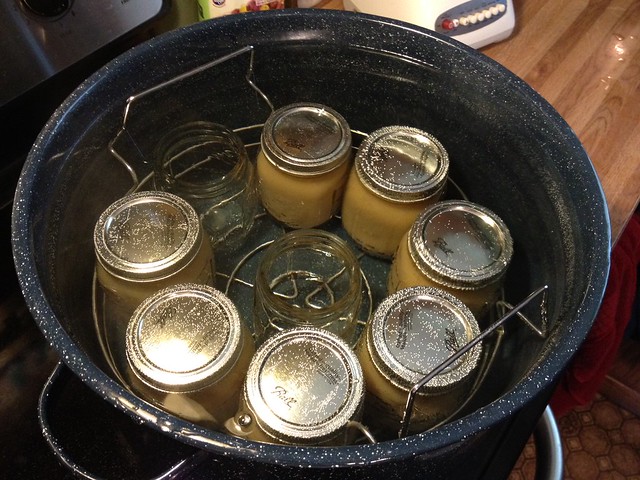 According to the Ball applesauce recipe, I needed to leave one-half inch of head space at the top of the jar. Using Terry’s measuring tape, I made a note of where to fill each jar to and began processing the sauce into jars. Before long I had seven jars capped and in the canner. I took out the two spare jars and replaced one of them with a half-pint of apple chutney left over from the day before. I cranked up the heat and returned to my laptop to write yet another blog post while waiting on the unwatched pot to boil. The recipe required twenty minutes at full boil, so as soon as I saw steam, I set the stove’s timer and relaxed for a bit.
According to the Ball applesauce recipe, I needed to leave one-half inch of head space at the top of the jar. Using Terry’s measuring tape, I made a note of where to fill each jar to and began processing the sauce into jars. Before long I had seven jars capped and in the canner. I took out the two spare jars and replaced one of them with a half-pint of apple chutney left over from the day before. I cranked up the heat and returned to my laptop to write yet another blog post while waiting on the unwatched pot to boil. The recipe required twenty minutes at full boil, so as soon as I saw steam, I set the stove’s timer and relaxed for a bit.
I cleaned up the kitchen to make room around the stove for a cooling rack and so I could move the canner off the front burner once the boil time expired. The jars rested in the canner for a few minutes before I removed them to the rack to cool for twenty-four hours. Just as before, as I removed the jars from the canner and placed each one on the rack, I could see and hear the lid popping as it sealed down. Three batches and not a single unsealed jar yet. Not bad for a rank amateur preservationist.
